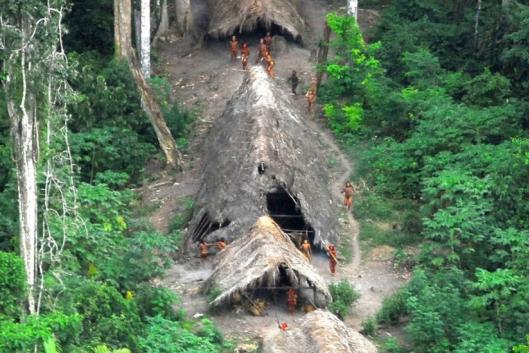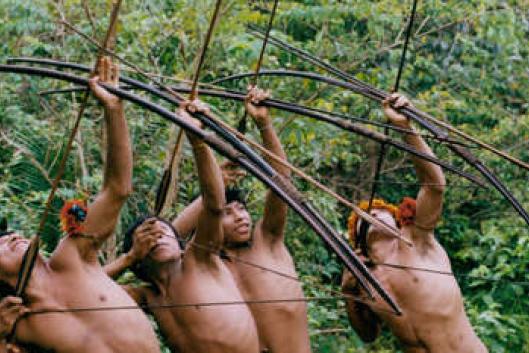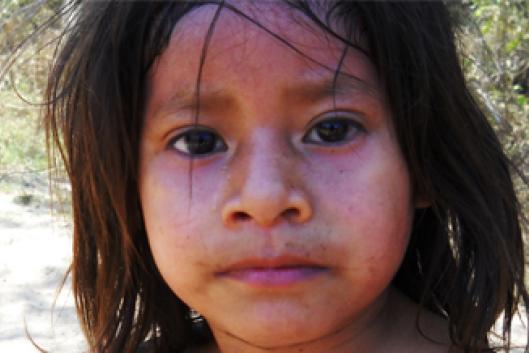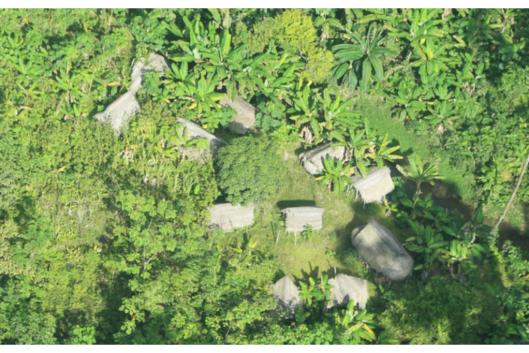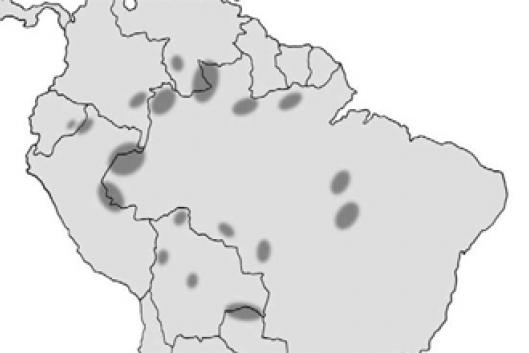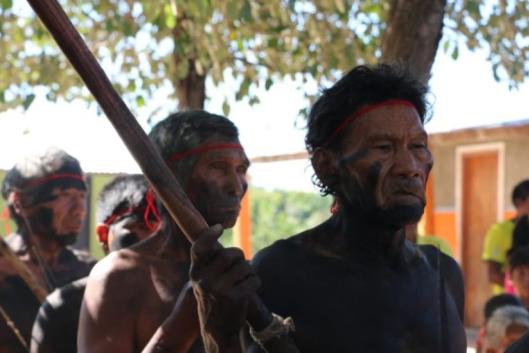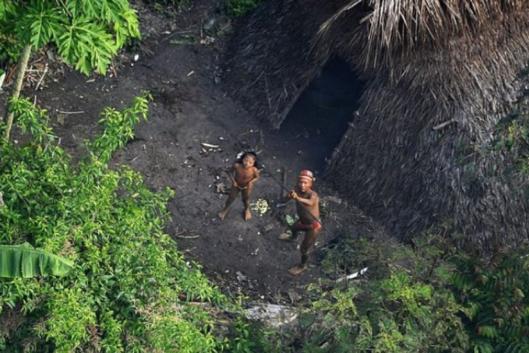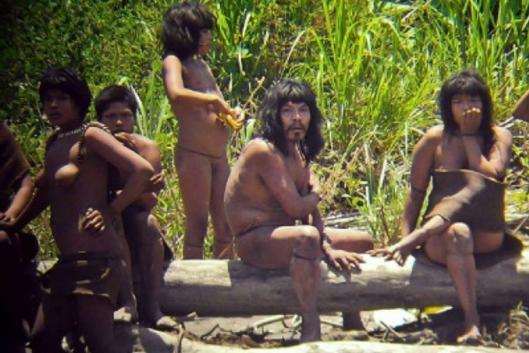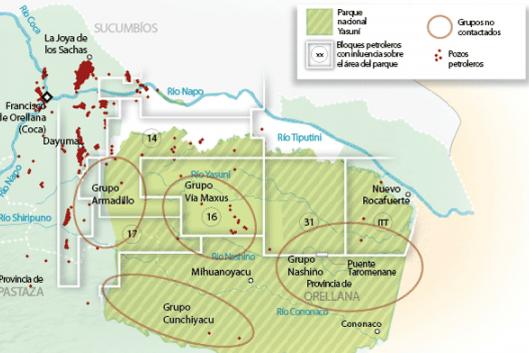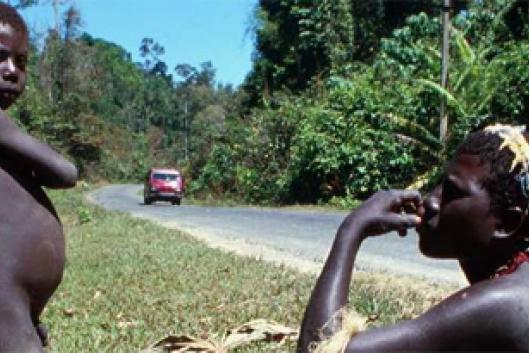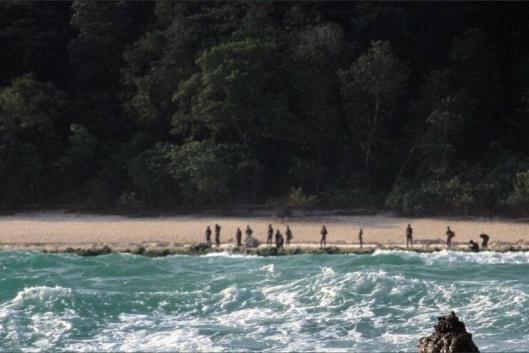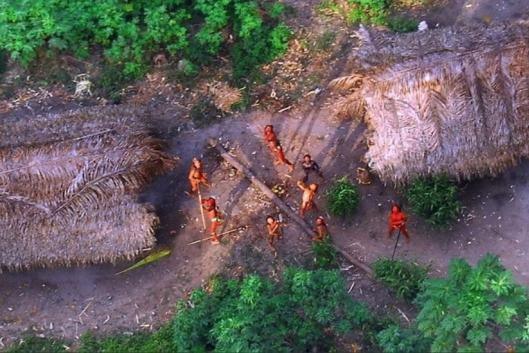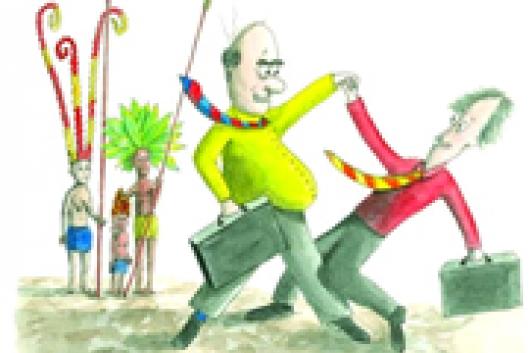Several years ago, a photograph made headlines around the world. In it, an indigenous man in a small village in the middle of the rainforest is aiming a bow and arrow up at the airplane in which the photographer was flying over the scene. The photograph attracted international media coverage because it documented the existence of a group of indigenous people living in isolation in the Brazilian Amazon rainforest, removed from any contact with so-called “civilization”.
Bulletin Issue 194 - September 2013
Indigenous Peoples in Isolation
Download the full bulletin in pdf format
Also available (in the oldsite) in French and Portuguese
WRM Bulletin
194
September 2013
OUR VIEWPOINT
INDIGENOUS PEOPLES IN ISOLATION: VOLUNTARY CHOICE OR SURVIVAL STRATEGY?
-
2 October 2013Photo: Survival International. It is remarkable that in the second decade of the 21st century much of the available evidence points to the existence of about 100 uncontacted tribes living on our planet. The fact that there are any at all is testimony to their resilience, ingenuity, self-sufficiency and adaptability. Few in number and living in remote regions, rich in natural resources which are increasingly coveted by outsiders, they are the most vulnerable peoples on our planet. The broad definition of uncontacted tribes is those who have no peaceful contact with anyone in the mainstream or dominant society.
-
2 October 2013Photo: By Pablo Cingolani. A Yuqui indigenous girl from the Bolivian Amazon. The Yuqui were a people living in isolation until they were contacted by missionaries between 1967 and 1991. Now they are a people in a situation of extreme vulnerability, precisely as a result of this forced contact.
-
2 October 2013Photo: uncontactedtribes.org.
-
2 October 2013Image: Approximate location of indigenous peoples living in voluntary isolation and initial contact. Source: Pueblos Indígenas en aislamiento voluntario y contacto inicial, IWGIA – IPES – 2012.
-
2 October 2013Photo: volunteerlatinamericablog.com. The spirit came in the form of a crow; it carried me up and said to me: “Look at Eami tonight. You can see many fires burning. They are the fires lit by your people, the Ayoreo, illuminating everything.” We continued to fly and the lights went out one by one. “This is the future of your people. The forest is growing dark because the Ayoreo do not live there anymore. Everything is turning to darkness.” My grandfather sang this to me when I was a boy. And I, Oji, remember his song. And now my people know that my grandfather sang the truth.
-
2 October 2013Photo: Gleyson Miranda, 2010 – FUNAI files, source: Pueblos Indígenas en aislamiento voluntario y contacto inicial, IWGIA – IPES – 2012
-
2 October 2013Photo: Mashco Piro indigenous peoples in the Madre de Dios reserve - By Diego Cortijo - Sociedad Geográfica Española, 2011. Source: Pueblos Indígenas en aislamiento voluntario y contacto inicial, IWGIA – IPES – 2012
-
2 October 2013In 1999, a presidential decree created the Tagaeri Taromenane “Intangible” or Untouchable Zone (ZITT) within Yasuní National Park. This meant that the area in question would be permanently off-limits for any extractive operations, including oil drilling. According to the decree, intangible zones are “protected areas of great cultural and biological importance in which no type of extractive activity can be carried out due to the high value they have for the Amazon region, Ecuador, the world, and present and future generations.”
-
2 October 2013Photo: Survival International Another major threat looming over some groups of isolated indigenous peoples is mass tourism. In some cases, private operators and local guides organize flights over areas where these groups are known to live, for the entertainment of tourists. On the Andaman Islands, “human safaris” are organized for visitors to take in a new tourist attraction: the Jarawa, a recently contacted tribe that has begun to relate with the outside world – although these relations take some very disturbing forms.
-
2 October 2013Photo: Survival International Living on their own small island, only 72 km2, the Sentinelese are probably the most isolated tribe in the world. They are thought to be directly descended from the first human populations to emerge from Africa, and have lived in the Andaman Islands for up to 55,000 years. They attracted international attention after the 2004 Asian tsunami, when a member of the tribe was photographed firing arrows at a coastguard helicopter that was checking they were safe.
-
2 October 2013Photo: uncontactedtribes.org 1. A view from the recently contacted Jarawa The Jarawa, from India’s Andaman Islands have only had friendly contact with settlers living near their forest since 1998. Their sudden appearance out of the forest without their bows and arrows, after more than a century of hostility, is widely credited to Enmai, a young Jarawa man. In 1996 Enmai spent six months in hospital after being found by settlers with a broken leg. He told a Shailesh Shekhar from the Hindustan Times, ‘In the early days, we were afraid of you people, …we would fear you…We had no idea about a world, about an existence beyond our jungle.’
RECOMMENDED
-
2 October 2013‘Tribal peoples for tomorrow’s world’ is written by Survival International’s Director Stephen Corry and published by Freeman Press. This ground-breaking new book draws on Corry’s unrivalled 40 years’ experience promoting tribal peoples’ right to self-determination. The treatment of indigenous and tribal peoples – the world’s largest minority – is a major humanitarian issue. It shapes world history and raises profound questions about what it really means to be human. This book explains who these people are, how they live, why governments hate them, and why their disappearance is far from inevitable.
-
2 October 2013There are two versions of Survival's ground-breaking report 'Progress can kill: how imposed development destroys the health of tribal peoples'. You can download any of them here: http://www.survivalinternational.org/progresscankill
-
2 October 2013disponible uniquement en anglais by Oren Ginzburg, Survival International. In this satirical animation, development experts claim to bring 'sustainable development' to an imaginary tribe. Instead, they bring destruction. ‘There You Go!’ shows how ‘development’ can rob self-sufficient tribal people of their land, livelihood and pride, and turn them into beggars: http://www.survivalinternational.org/thereyougo
-
2 October 2013By Global Witness, May 2013. This report examines a range of factors that Global Witness believes may be unduly influencing the decision-making around the highway project, including alleged corruption and possible conflicts of interest. Download in pdf format: Rocky Road. How legal failings and vested interests behind Peru’s Purús highway threaten the Amazon and its people
-
2 October 2013Only available in Spanish. Por Dinah Shelton, Antenor Vaz, Beatriz Huertas Castillo, Carlos Camacho Nassar, Luis Jesús Bello, Paola Colleoni, José Proaño, Dany Mahecha R. (ed.), Carlos Eduardo Franky C. (ed.) y la Unión de Nativos Ayoreo de Paraguay e Iniciativa Amotodie, Grupo Internacional de Trabajo sobre Asuntos Indígenas, IWGIA y el Instituto de Promoción Estudios Sociales, IPES – 2012. Download: http://www.iwgia.org/iwgia_files_publications_files/0603_aislados_contacto_inicial.pdf
